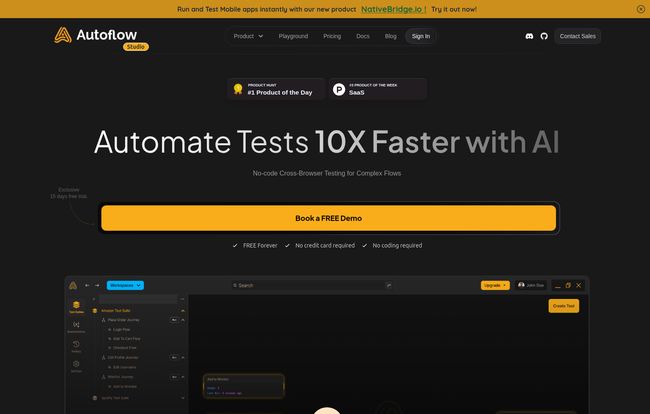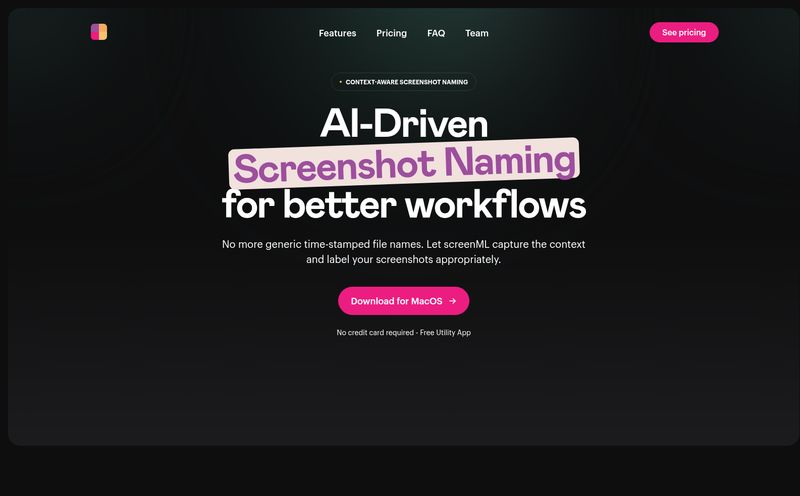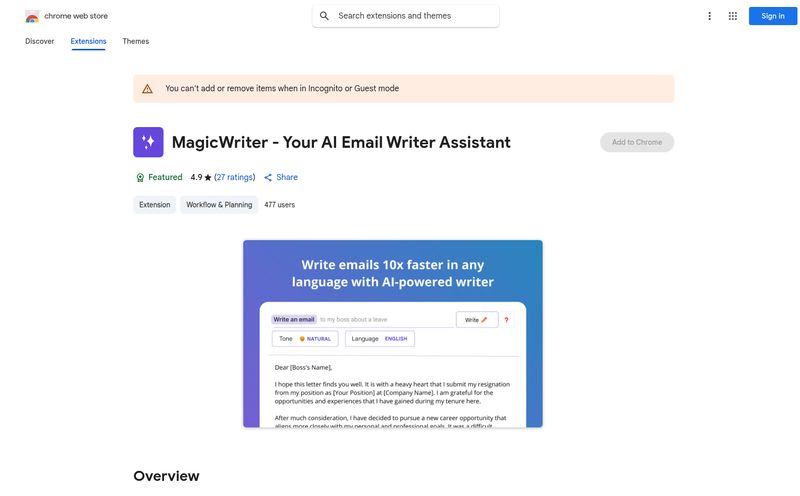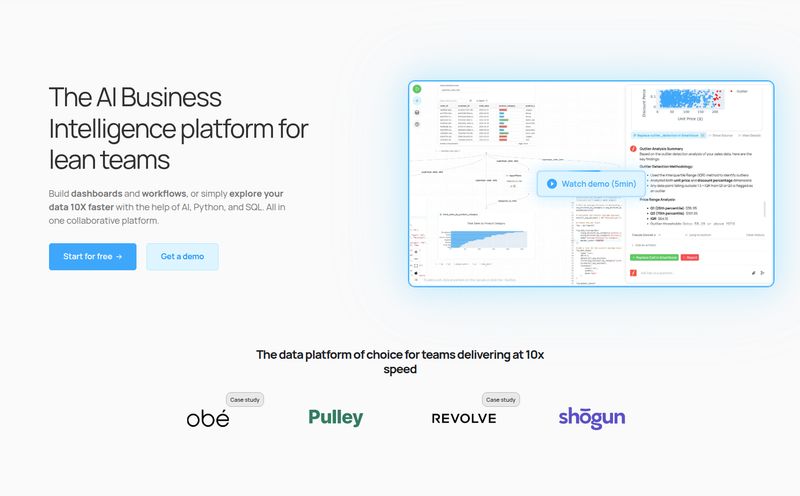We've all been there. It’s 1 AM, the project deadline is breathing down your neck, and you’re manually clicking through the same user flow for the fifteenth time, praying you don't miss that one obscure bug that only shows up on Firefox for Android. The promise of test automation sounds like a beautiful symphony, but the reality? It’s often a tangled mess of brittle scripts, dependency hell, and a learning curve steeper than a cliff face. It's the reason so many QA tasks remain painfully manual.
So, when I stumbled upon AutoFlow Studio, with its bold claim to “Automate Tests 10X Faster,” my seasoned, slightly-jaded-blogger senses started tingling. I’ve seen countless tools promise to revolutionize testing with a “no-code” wand. Most are... well, let's just say they overpromise. But after spending some time digging into what AutoFlow is all about, I have to admit, this one feels different. It might just be the tool that bridges the gap for teams who desperately need automation but lack the dedicated coding resources.
So, What's the Big Deal with AutoFlow Studio?
In a nutshell, AutoFlow Studio is a no-code automated testing tool built for the modern software team. Think of it less like a rigid coding environment and more like a visual flowchart for your application. You’re not writing lines of code; you’re connecting nodes that represent user actions—‘Click Button,’ ‘Enter Text,’ ‘Verify Element Is Visible.’ It’s designed for everyone from the dedicated QA engineer and the full-stack developer to the product manager who just wants to verify their user story works as intended.
The whole idea is to map out your end-to-end tests based on actual user journeys. You can literally record your actions on a web or mobile app, and AutoFlow translates that into an automated test flow. It’s an intuitive approach that lowers the barrier to entry, which is something our industry desperately needs.

Visit AutoFlow Studio
The interface feels like you’re building with digital LEGOs instead of wrestling with syntax. This visual-first approach is key, because it makes tests understandable to non-technical stakeholders. A product manager can literally look at a test flow and say, “Yep, that’s the sign-up process I designed.” That kind of clarity is gold.
The Features That Actually Matter
A long list of features is one thing, but which ones actually solve real-world problems? After looking through their offerings, a few things really stood out to me.
Test Across the Entire Digital Zoo
One of the biggest headaches in testing is browser and device fragmentation. A feature working perfectly in Chrome can completely fall apart on Safari. AutoFlow tackles this head-on with built-in cross-browser and mobile testing. You can build a test once and then run it across different browsers and environments without rewriting a thing. This isn't just a convenience; it's a sanity-saver that prevents those dreaded “but it works on my machine” conversations.
It Plays Well with Others (CI/CD)
A testing tool that doesn’t fit into your development pipeline is just another siloed process. Thankfully, AutoFlow Studio seems to get this. It offers easy integration with CI/CD tools like Jenkins, GitHub Actions, and CircleCI. For developers and DevOps folks, this is non-negotiable. It means you can trigger your automated test suites automatically with every new build, catching regressions before they ever make it to production. This is how you build a real culture of quality, not just a testing checklist.
Testing as a Team Sport
The platform is clearly built with collaboration in mind. Reusable test nodes mean that once someone builds a reliable “Login” flow, the whole team can drag-and-drop it into their own tests. This speeds things up immensely and promotes consistency. It creates a shared library of test components, turning a solo activity into a team effort. The real-time alerts and reports also ensure everyone is on the same page, from dev to PM.
Let's Talk About the Price Tag
Alright, this is often the awkward part of the conversation. But AutoFlow Studio is surprisingly transparent, and what they offer is compelling. The first thing you see is the magic phrase: Free Forever.
And it's not some useless, crippled version either. The free plan gives you a decent number of test runs, unlimited local tests, and access to community support. For a freelancer, a small startup, or just someone wanting to properly kick the tires, this is an incredible entry point. Its a bold move that shows confidence in their product.
For teams that need more power, the paid plans seem reasonably structured:
| Plan | Price | Best For |
|---|---|---|
| Basic | $0 (Free Forever) | Individuals and teams learning the ropes or testing simple web apps. |
| Starter | $0/month for the 1st month | Growing teams that need more cloud runs and basic CI/CD integrations. |
| Pro | $0/month for the 1st month | The sweet spot for most businesses. Adds more integrations, parallel testing, and AI suggestions. |
| Enterprise | Talk to Us | Large organizations needing custom solutions, dedicated support, and advanced security. |
The "$0/month for the first month" on the Starter and Pro plans is a fantastic way to try before you buy, giving you full access to see if it fits your workflow before committing. In my opinion, the Pro plan seems to hit the sweet spot for most small to mid-sized businesses that are serious about automation.
The Other Side of the Coin: Potential Downsides
No tool is a silver bullet, and it would be dishonest to pretend otherwise. While I’m optimistic about AutoFlow Studio, there are a few things to keep in mind. The platform itself mentions potential limitations for “highly complex or custom scenarios.” What does this mean? If you need to run tests that involve heavy data manipulation from external databases or interact with obscure legacy systems via a custom API, you might still need the raw power and flexibility of a code-based framework like Cypress or Playwright.
There's also a potential learning curve. "No-code" doesn't mean "no-logic." You still need to think like a tester and understand how to build resilient, effective test flows. Finally, like any SaaS platform, you’re operating within their ecosystem. You're reliant on their feature roadmap and uptime. It’s the age-old tradeoff of convenience versus control.
So, Who Should Give AutoFlow Studio a Shot?
After my analysis, I think the ideal user for AutoFlow Studio falls into a few camps:
- Startups and Agile Teams: For teams that need to move fast and don’t have a dedicated test automation engineer, this could be a game-changer.
- Manual QA Professionals: This is the perfect tool for manual testers who want to dip their toes into automation without having to become full-fledged developers.
- Product and Project Managers: PMs can use it to create and manage user-story tests themselves, ensuring the final product matches their vision.
If you're an enterprise with a decade-old, deeply embedded Selenium framework run by a team of senior engineers, this might not be a replacement. But for everyone else? It’s absolutely worth a look.
Final Thoughts: Is the Hype Real?
So, does AutoFlow Studio live up to the “10x faster” claim? You know what? For the right kind of team and the right kind of testing, I think it actually might. By removing the coding bottleneck, it dramatically accelerates the process of creating and maintaining tests. It democratizes testing, which is a powerful thing.
I went in skeptical, but I’m coming out pretty impressed. AutoFlow Studio feels like a mature, thoughtful product in a space that’s often full of half-baked ideas. The generous free plan removes any reason not to try it. If you're tired of the manual testing grind, do yourself a favor and book a demo. You might be pleasantly surprised.
Frequently Asked Questions
Do I need to be a coder to use AutoFlow Studio?
Absolutely not. That's the whole point! It’s a completely no-code platform designed for anyone on the team, technical or not. If you can map out a process on a whiteboard, you can build a test in AutoFlow.
How does AutoFlow Studio compare to tools like Selenium or Cypress?
Selenium and Cypress are code-based frameworks that offer immense power and flexibility but require programming knowledge. AutoFlow Studio is a no-code platform that prioritizes speed and ease of use. For most common web and mobile app testing scenarios, AutoFlow can get you there much faster. For extremely complex, niche tests, a code-based tool might still be necessary.
Is it just for web apps, or can it test mobile apps too?
It handles both! The platform supports automated testing for both web and mobile applications, allowing you to manage your entire testing suite from one place.
Can I integrate AutoFlow into my existing workflow?
Yes. It’s built to integrate with popular CI/CD pipelines like Jenkins, GitHub Actions, Slack, and more. This allows you to run your tests automatically as part of your development and deployment process.
Is the free plan good enough to actually use?
Yes. The 'Free Forever' plan is surprisingly generous, offering unlimited local test runs and a solid number of cloud runs per month. It's more than enough to test a small project or to fully evaluate the platform's capabilities before upgrading.
Reference and Sources
- AutoFlow Studio Official Website
- Martin Fowler's Essay on Continuous Integration (For context on CI/CD importance)



